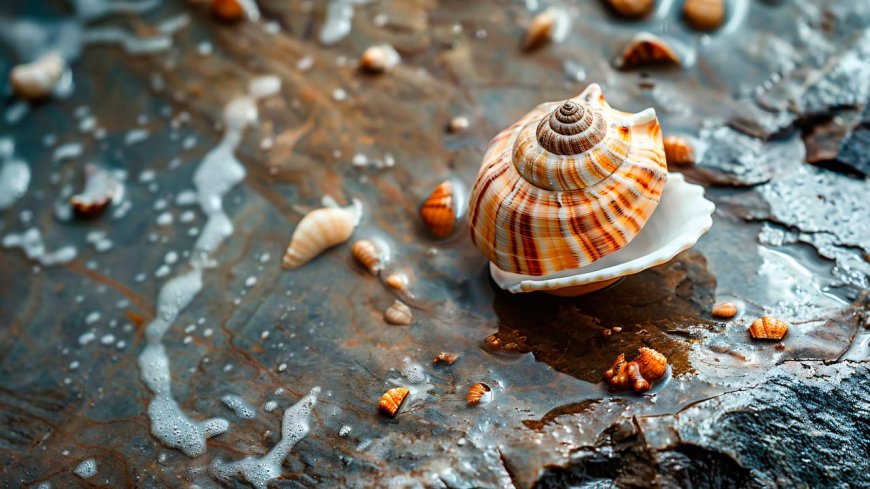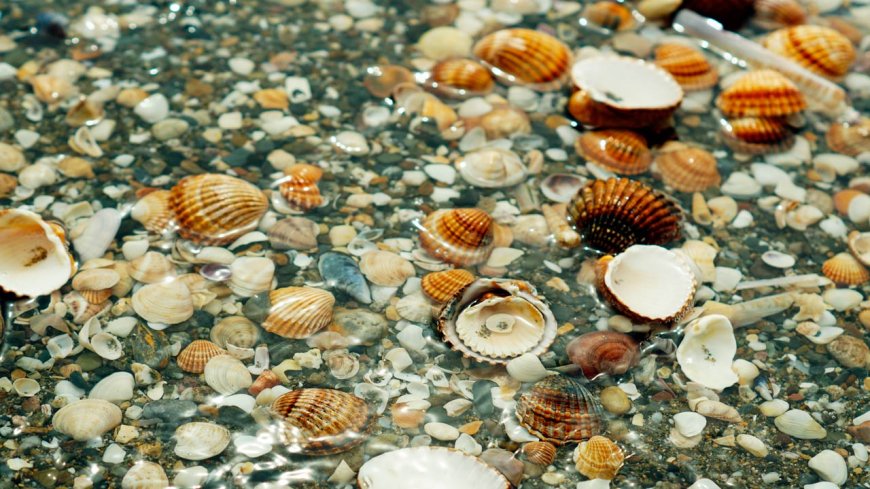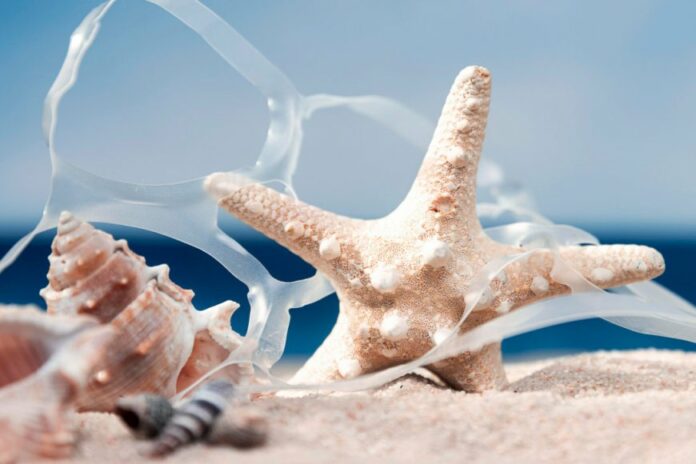According to UNESCO, plastic waste makes up 80% of all marine pollution, with 8-10 million metric tons of plastic making its way into our oceans each year.
USC Viterbi researchers have discovered a mineral commonly found in seashells could be the key to a safer plastic alternative — one that could someday put an end to the upsetting imagery of marine life tangled in soda can packaging rings and plastic bags.
The research is led by Eun Ji Chung, the Dr. Karl Jacob Jr. and Karl Jacob III Early-Career Chair at USC Viterbi School of Engineering and a leading expert in engineered nanoparticles for clinical applications. Developing a substitute for plastic may seem like an unexpected research pivot for her. However, Chung has a background in biomaterials, and her lab recently developed a new biocompatible plastic alternative by adding calcium carbonate from seashells into poly (1,8-octanediol-co-citrate) (POC), an FDA-approved biodegradable material used in orthopedic fixation devices. The Chung Lab research was published in MRS Communications.
During the pandemic, Chung said she became acutely aware of the excess waste she saw from disposable masks and gloves and our increasing reliance on single-use plastics. She began to consider possible replacements.

“I started thinking about how, even in our lab, everything is single-use plastic because everything has to be sterile. Nothing can be contaminated. It all just started to feel very overwhelming for me personally,” Chung said.
Chung began to revisit work she had done as a graduate research student, where she worked on a biodegradable polymer made of citric acid, which is found in oranges. The research from this work was geared towards creating polymers for biomedical applications for sutures and tendon fixation devices.
“In graduate school, we added hydroxyapatite, which are these calcium particles that are in your bone, and I fabricated them together, and they are now biodegradable materials that are already. FDA approved.”
“I started thinking that seashells have calcium, too. That’s why they’re stiff like bone. But they have a different kind of calcium particle. So, I basically adapted what I did and replicated it to be more suitable for an alternative plastic material.”
Chung said the citric acid polymer’s texture is sticky, like a gum. When the calcium particles are added and it is heated and cured in an oven, it forms a plastic-like material. The resulting material, POC-CC, was developed into a prototype and cut into the formation of soda can beverage holder rings that were robust enough to hold cans.
The team hypothesized that the POC-CC material would be a biocompatible plastic substitute that could degrade in marine environments while maintaining sufficient strength for industrial applications.

To test this, POC-CC was synthesized with varying concentrations of calcium carbonate. Over six months, they observed various factors including the weight degradation rate in ocean water and the effect the material had on the pH of the water after long-term incubation.
“Our results show the degradation rate increases with increased POC content, and the addition of CC maintains the pH of ocean water,” Chung said.
Another benefit of the material is its biocompatibility — it doesn’t cause harm to marine life in the way that introduced microplastics do. The research team incubated a type of green algae (Scenedesmus sp.) alongside the POC-CC material, housing them in simulated ocean water for six months. The team noted high cell viability, confirming the fact that the POC-CC plastic substitute was biocompatible with marine microorganisms.
Chung and her team are now planning an improved second-generation version of the material to help it degrade faster.
Chung added that the material had many potential applications, such as in the production of biodegradable straws that were stronger than bamboo or paper straws and safer than reusable metal ones.
The Chung Lab research was supported by a USC Sea Grant, a federal-state-university partnership that aims to solve issues arising from managing people and natural resources in an intensely urban and developed coastline.



